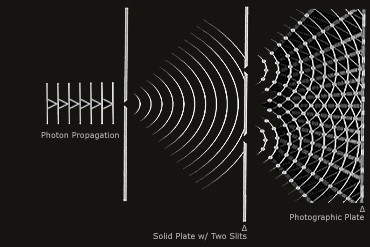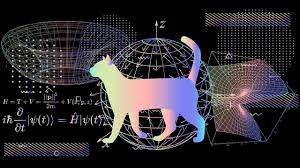
Said Einstein of quantum mechanics. Specifically, he was referring to entanglement.
Entanglement, a central phenomenon in quantum physics, refers to when two or more
elementary particles are interwined such that each particle's behavior is intrinsically
linked to the behavior of the other(s)- entangled. They are connected at the quantum level,
meaning their quantum states cannot be described independently of the other.

We'll call the electron on the left Electron A, and the electron on the right Electron B.
One characteristic of electrons that illustrates the concept of entangement is spin,
The concept of spin, for our purposes, is just that: spin- a merry-go-round, a dreidel, a wheel. Spin is
a measurement of motion- of "angular momentum," more precisely- which is why it is represented by
a numerical value, but that's as far as we need to go (for a more in-depth explanation,
this video by Parth G is super helpful!)
While spin is represented by a numerical value, it can also be represented directionally.
Let's say Electron A's spin is clockwise. Because they are entangled, this means that Electron
B's spin is necessarily counter-clockwise.
This is true when the electrons are this far apart:
A <---------> B
Or, this far apart:
A <-------------------------------------------------------------------------->B
No matter how far apart in the universe they are, they remain entangled. Distance does not
disturb entanglement. What does disturb entanglement, however, is human observation. This is known
as the observer effect: the fact that observing a phenomenon necessarily changes it. In the case of
electrons, we may be tempted to attribute the observed changes in behavior to limitations of human perception,
but this is not the case. The act of observing itself changes the nature of the particles being observed.
Thomas Young's famous double-slit experiment illustrates the observer effect. To learn more about the observer effect and the double-slit experiment,click here.

Entanglement, uncertainty, the observer effect- these are all concepts that reveal just how strange quantum mechanics is. Other branches of physics, even Einstein's realm of relativity, are far more intuitive than quantum physics. (Return to previous page.)
